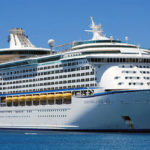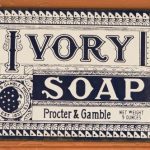 Mysteries
Mysteries  Mysteries
Mysteries  Weird Stuff
Weird Stuff 10 Things So Rare They’ve Only Been Found Once
 History
History 10 Legends Whose Last Moments Undid Their Glory
 Health
Health 10 Futuristic Ideas to Treat Common Medical Problems
 Weird Stuff
Weird Stuff Ten Surreal Attempts to Reverse Baldness
 Facts
Facts 10 U.S. Government Contingency Plans for the Unthinkable
 History
History 10 Weird Distractions from the Great Depression
 Movies and TV
Movies and TV 10 Fictional Kings Who Go from Good to Bad
 Food
Food The Fantastic Chemistry Behind Why 10 Popular Foods Taste So Good
 Technology
Technology 10 Futuristic Fungal Technologies
 Mysteries
Mysteries 10 Mysteries of the Human Genome
 Weird Stuff
Weird Stuff 10 Things So Rare They’ve Only Been Found Once
 History
History 10 Legends Whose Last Moments Undid Their Glory
Who's Behind Listverse?

Jamie Frater
Head Editor
Jamie founded Listverse due to an insatiable desire to share fascinating, obscure, and bizarre facts. He has been a guest speaker on numerous national radio and television stations and is a five time published author.
More About Us Health
Health 10 Futuristic Ideas to Treat Common Medical Problems
 Weird Stuff
Weird Stuff Ten Surreal Attempts to Reverse Baldness
 Facts
Facts 10 U.S. Government Contingency Plans for the Unthinkable
 History
History 10 Weird Distractions from the Great Depression
 Movies and TV
Movies and TV 10 Fictional Kings Who Go from Good to Bad
 Food
Food The Fantastic Chemistry Behind Why 10 Popular Foods Taste So Good
 Technology
Technology 10 Futuristic Fungal Technologies
The Bizarre Origin Stories of Ten World-Famous Brand Names
Large corporations have perfected marketing and branding in the decades since the era portrayed on the famed TV show Mad Men. Back then, ad agencies and marketing experts were just trying to figure out how to advertise to the average consumer. Nowadays, there are all kinds of focus groups, algorithms, and tactics—both shrewd and shady—that’ll get you to buy the products these companies want you to buy.
But what’s in a name? Marketing genius or not, when it comes to brands winning the business war, half the battle comes down to name recognition. If you recognize a company’s name, you’re more likely to trust and purchase the product regularly. That’s the hope, at least. So, today, we’re going to examine exactly what’s in a name—a brand name. Here are the wild, strange, funny, and unique stories about how ten world-famous brands got their names.
Related: 10 Companies That Changed the World
10 Pez
Pez was first created as a tasty (and a bit tangy, if we’re being honest) peppermint candy in 1927. However, they weren’t initially meant for those with a sweet tooth—they were targeted at smokers. Pez was designed to encourage people to stop cmoking.
The candy’s inventor was an Austrian man named Eduard Haas III. At first, he didn’t come up with the now-iconic Pez dispenser to disperse the candy. Instead, he simply chose to drop the candies into small metal tins. People would carry those tins around and chew on the candy pieces all day—sort of like what the other world-famous brand Altoids does with their products in the modern era.
Anyway, back to the birth of the name. As a resident of Austria, Haas naturally spoke German. In that language, the word for peppermint is “pfefferminz.” So, being the creative guy he evidently was, Haas took the “P” from the start of that world, the “E” from the exact middle letter, and the “Z” that capped it out and created the brand name “PEZ.” The name stuck! While the candy’s shape and dispersal method have changed over the decades, the name itself has simply proven too iconic to give up.[1]
9 WD-40
Persistence pays off. And if you don’t believe us, just ask the guy who invented WD-40. In 1953, a chemist desperately tried to perfect a formula that could effectively prevent corrosion. That task is best completed by displacing water, but no matter how hard he tried or experimented, he just couldn’t seem to get things done. He attempted to displace water in one way or another, again and again, for 39 straight attempts. And for 39 straight attempts, he failed. And then… the 40th time proved to be the charm!
The chemist finally had a breakthrough on his 40th crack at the formula. And he thought so highly of his success and resilience that he decided to honor that push when it came time to name the product. Thus, “WD-40” stands for “Water Displacement, 40th formula.” Just goes to show that you shouldn’t give up on something just because you failed once or twice… or ten times… or 39 times! After all, you never quite know: the 40th time might truly be the charm![2]
8 Etsy
The person who founded Etsy was a guy named Rob Kalin. In 2010, a news outlet asked him the obvious question: why “Etsy”? After all, the art-and-crafting website was fast on the rise back then. And now, it has completely taken over the way we shop for artistic goodies and buy custom-made things. So it’s worth wondering what led Kalin to name his website the way he did!
As it turns out, the founder simply wanted a nonsense word that he could build from scratch and make his own. So he turned to the famed Italian film director Federico Fellini for some halfway inspiration that he could mesh and mold into what he wanted!
Kalin explained: “I was watching Fellini’s 8½ and writing down what I was hearing. In Italian, you say ‘etsi’ a lot. It means ‘oh, yes.’ And in Latin, it means ‘and if.’” It’s weird, but it works for us! Besides, shouldn’t a crafting do-it-yourself site like Etsy have a (mostly) made-up word as its brand name? What a fitting idea for the site![3]
7 Virgin
Richard Branson’s companies are all called “Virgin.” There’s Virgin Records and Virgin Airlines, and after a while, it sure does make ya wonder: What is up with all the virginity talk? Is there a joke buried in there not-so-subtly or something? Well, actually, yes! When the company was first founded, Richard and his pals were (rightly) worried that they didn’t know anything about business. But instead of stressing too hard about that little problem, they decided to make a joke out of it.
For a while, Branson wanted to name the company something entirely different. One of the leading early contenders for the record company’s name was “Slipped Disc.” Get it? Eventually, one of his pals suggested that they name the thing “Virgin.” You know, because they were all “virgins” at business. At first, everybody laughed. But then the name stuck around. And really, who’s laughing now?[4]
6 Delta Airlines
The wonderful folks at Delta Airlines didn’t name their company after the fourth letter of the Greek alphabet, even though that’s a common misconception. And they didn’t name it “Delta” because they enjoyed change or disruption like many people have also come to believe. The origin of the name is far simpler than that, in reality. It all has to do with how the company started nearly a century ago: as a crop dusting service in the region comprising the lowest points around the Mississippi River!
As many of you may know, the floodplain of the Mississippi River way down south, near where it lets out into the Gulf of Mexico is known as the Mississippi Delta. A century ago, the folks who founded the airline were working there, dusting crops for local farmers.
At the time, their company was known as “Huff Dusters.” That name stunk, though, and they knew it. So, they renamed the company “Delta Airlines” to honor the region in which they were founded. Not long after that, in 1929, Delta began operating commercial flights with passengers. And the rest is history![5]
5 Pepsi
Pepsi was first invented in 1893 by a drugstore owner named Caleb Davis Bradham. At the time, he made up his then-groundbreaking beverage by mixing caramel, lemon oil, nutmeg, sugar, water, and a host of other natural ingredients. And for a while, he had a simple name for it: “Brad’s Drink.” But eventually, Bradham came to see the drink as less of a refreshing treat and more of a beverage that could cure all manner of ills suffered by local folks. (Or at least that’s what he told himself—and how he marketed the thing to eager customers with money to burn!)
So, five years later, he honed in on the word “dyspepsia,” which means indigestion, and decided to use the root of that word for his drink. In 1898, he pulled away from the name “Brad’s Drink” and replaced it with “Pep Kola” after buying the rights to that name from a competitor. The “pep” was meant to signal that the drink could fix dyspepsia. Whether it did wasn’t important; he just wanted consumers to think it could. And to that end, it was very successful! A few years later, it was changed to “Pepsi Cola,” and from there, the name has not changed.[6]
4 Target
Target may be world-famous now as one of the biggest and most beloved retail giants ever. But it didn’t start out that way! In the day, Target was first opened by a corporation called The Dayton Company in the ripe old year of 1962. And amazingly, at the time, they opened the store without having latched onto a name! They knew they wanted to create a department store that could sell everything anybody could ever want. And they were committed to a red-and-white color scheme that could draw attention. But as for a name? They were adrift.
That is until the company’s publicity director came up with the name “Target.” According to his reasoning, the bullseye-related word fit perfectly because the original store was set up to have more than 75 different departments, as well as parking for nearly 1,300 cars. Thus, it would be so big and so useful across every sector that it would be the perfect “target” for everyone’s retail needs. The name took hold—and stuck—and here we are today. And really, who doesn’t love to go to Tarjay?[7]
3 Ikea
In 1943, a 17-year-old Swedish man named Ingvar Kamprad founded the company that would soon become Ikea. He brought it about thanks to a pile of money his father had given him as a reward for doing well in school. The teenager initially started very simple: He sold pens, and then wallets, picture frames, watches, jewelry, and even nylon stockings. And he named the company in a simple way, too. By putting together the two first initials that made up his name along with the two first initials of the farm and village in which he grew up!
To that end, Ingvar Kamprad combined his own name with the first letters of the farm and village Elmtaryd and Agunnaryd… and got Ikea! By the way, Ikea’s now-famed product names also have a reason behind them.
See, Kamprad was dyslexic, so he realized early on that naming things after proper names of places in Sweden and other countries (like Klippan, Malmö, and many more) was a more effective way for him to remember the names and how they were spelled. Honestly, it’s not a bad idea![8]
2 Google
Pretty much everybody at this point knows that the search engine Google takes its name from the word “googol,” which is the mathematical term for the number 1 followed by 100 (yes, 100!) zeros. That’s a big number! But do you know how the search giant got to that name? The year was 1996, and founders Larry Page and Sergey Brin initially planned to call their search engine “BackRub.” That was supposed to reference the so-called “backlinks” of the then-primitive worldwide web. They weren’t totally crazy about the name, though, so they began discussing other options with pals and co-workers in the research lab, where they spent all their time.
Eventually, during one final brainstorming session in September of ’97 with a Stanford University graduate student named Sean Anderson, the crew landed on the word “googolplex.” Larry suggested they shorten it just to “googol” and looked it up on the web to be sure they could purchase the domain name. And the domain was available! It’s just that… well, when Sean went to register the thing, he misspelled “googol” as “google.” The group ended up liking that one better than the correct term, though, and so it stuck.[9]
1 LEGO
When it comes to creating the name of one of the most iconic children’s toys of all time, the whole thing actually came together very simply! LEGO was founded by a Danish man named Ole Kirk Kristiansen in 1932. And to this day, it is still owned by the Kristiansen family—it just keeps getting passed down from generation to generation! That’s a pretty rare situation in this day and age of super-corporations and mega-companies turning into behemoths and conglomerates.
Anyway, when it came time for Ole to name his company, he settled on something very simple: the Danish words “leg godt.” That translates roughly to “play well.” He combined the words into the now-iconic “LEGO,” that was that. He thought it looked good, sounded good, and was easy to say across nearly any language. And he was right![10]
+ BONUS: Twitter
It may be called “X” now, but back in the day, Twitter was Twitter. Unless you are new to the website over the last 24 months, you undoubtedly can’t stop calling it Twitter and start using its new “X” moniker. Well, if you’re anything like us, at least. It’ll always be Twitter over here! But how did the original name come about, anyway? And where did co-founder Jack Dorsey and his team get the idea that a message would be called a “tweet”?
Birds definitely come into play with this name idea. But it goes a little bit deeper than that, too. At first, Dorsey considered (and then turned down) the name “Twitch.” That’s a funny thought because Twitch would go on to become its own gaming- and streaming-related social network. But Dorsey thought Twitch wasn’t quite the right name for his micro-blogging service way back 20 years ago when he was first putting it together. So he looked elsewhere.
Recalling how he came up with the name “Twitter” in an interview years later with the BBC, Dorsey explained: “We looked in the dictionary for words around it and came across the word ‘twitter,’ and it was just perfect. The definition was ‘a short burst of inconsequential information’ and ‘chirps from birds.’ And that’s exactly what the product was.”[11]








